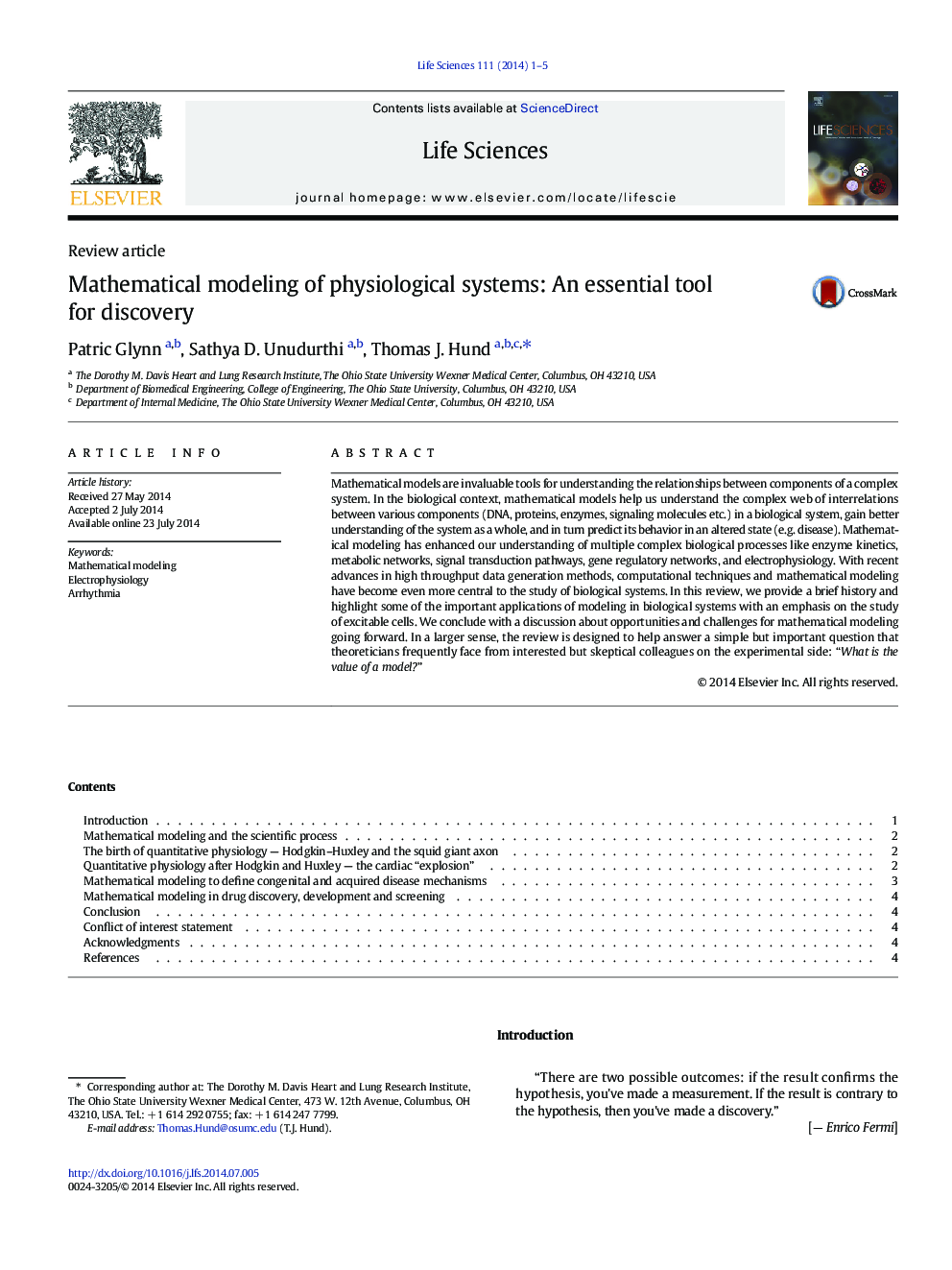| Article ID | Journal | Published Year | Pages | File Type |
|---|---|---|---|---|
| 2551107 | Life Sciences | 2014 | 5 Pages |
Mathematical models are invaluable tools for understanding the relationships between components of a complex system. In the biological context, mathematical models help us understand the complex web of interrelations between various components (DNA, proteins, enzymes, signaling molecules etc.) in a biological system, gain better understanding of the system as a whole, and in turn predict its behavior in an altered state (e.g. disease). Mathematical modeling has enhanced our understanding of multiple complex biological processes like enzyme kinetics, metabolic networks, signal transduction pathways, gene regulatory networks, and electrophysiology. With recent advances in high throughput data generation methods, computational techniques and mathematical modeling have become even more central to the study of biological systems. In this review, we provide a brief history and highlight some of the important applications of modeling in biological systems with an emphasis on the study of excitable cells. We conclude with a discussion about opportunities and challenges for mathematical modeling going forward. In a larger sense, the review is designed to help answer a simple but important question that theoreticians frequently face from interested but skeptical colleagues on the experimental side: “What is the value of a model?”
Graphical abstractFigure optionsDownload full-size imageDownload high-quality image (183 K)Download as PowerPoint slide
